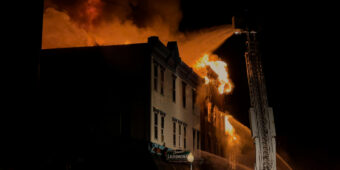Heads up on hard hats
22 Mar 2018, Prove Your Know How, Safety

After Site Safe analysed the most common requests it receives through its online query system, it identified a surprising trend, which is that information about when to wear a hard hat and how to properly maintain them was in hot demand! This article should help to answer any questions you might have
Hard hats are one of the most common pieces of protective gear on site, which means they can often be overlooked when it comes to proper maintenance and care. Site Safe has put together some useful tips to make sure you are getting the most from this key piece of PPE.
Do I need a hard hat?
Hard hats that comply with NZS 5806, or other suitably approved head protection, must be worn at all times while on site where there is a risk of objects falling from above. In fact, hard hats are becoming mandatory on most sites in New Zealand.
Hard hats should be worn in any area that has the potential for workers:
- To be hit or struck by falling, fixed, moving or protruding objects.
- To come in contact with electricity.
- Be exposed to UV, weather, and temperature extremes.
Choosing the right hard hat for the job
Hard hats come in a range of styles to suit all types of work:
- Industrial – suitable for use in construction, factories and quarries.
- High temperature – suitable for use in processes such as steel and glass manufacturing.
- Bushfire fighting – suitable for use by emergency personnel for combating bush fires.
- Peakless – allowing clear upward vision.
- Peaked – providing shade for the eyes and some facial protection.
- Full brim – providing fuller protection from falling objects and UV, as well as water.
Some hard hats can be fitted with accessories such as face shields, respirators, hearing protection and work lamps. When selecting your hard hat, you should also consider whether ventilation or hi-viz colouring is of benefit.
How hard hats work
Hard hats comprise of a hard outer shell designed to take the initial impact and an inner harness designed to absorb and spread this impact, minimising the effects of the force to the skull.
How must a hard hat be worn?
Adjust the harness cradle to ensure comfort and total contact with your head at all times.
It’s recommended you don’t wear bulky clothing items on your head, as this will result in the harness cradle becoming ineffective. This includes hoods, baseball caps, thickly woven or heavily seamed beanies or balaclavas. Some hairstyles, such as dreadlocks, are also not recommended. Safety clothing distributors offer seamless polypropylene beanies, which do not interfere with the performance of the harness cradle.
To secure your hard hat, you can use the elastic chinstraps, or a four-point retaining strap integrated with a harness when working at height. The elastic chinstrap is recommended to secure the hat and prevent it being moved by the wind.
Ensure any attachments are compatible with the make and model of the hard hat. If you have any specific questions about wearing your hard hat, it is a good idea to check with the manufacturer.
When should I replace my hard hat?
Hard hats do not have an expiry date; however, it’s a good idea to record the date of issue by writing on the inside of the hat with a marker and replace the hat every two or three years.
Please note: that means the date that you are issued the hat, not the date of manufacture.
Your hat should be inspected weekly for signs of damage, such as dents or cracks. A simple test is to squeeze the sides of the hard hat together and listen and feel for signs of stress or cracking, which indicates brittleness and deterioration. If your hat shows any signs of deterioration, replace it immediately.
Components such as the sweatbands and harness may deteriorate more rapidly and may need to be replaced.
Looking after your hard hat
- Store in a cool, dry environment away from direct sunlight and heavy or sharp objects.
- Keep your hard hat away from chemicals, including paints, paint thinners, solvent-based adhesives (stickers) and cleaning agents.
- Clean by scrubbing and immersing in warm soapy water, and rinsing in clean warm water.
- Sweatbands must be regularly replaced as required.
- If the hat loses its glossy finish and appears chalky, the shell must be replaced.
Training
Employers are responsible for ensuring their workers are trained in the safe use, care and maintenance of hard hats. This training should include:
- The hazards controlled by hard hat use.
- How the hard hat works.
- Limitations of hard hats.
- When hard hats must be worn.
- How to wear a hard hat correctly.
- How to adjust the hard hat for comfort and fit.
- How to correctly store a hard hat.
- How to identify signs of wear or damage.
- How to clean and maintain their hard hat.
For more information on PPE, go to www.sitesafe.org.nz to enrol in one of Site Safe’s Passport Plus renewal courses.
Register to earn LBP Points Sign in
5 Comments
Leave a Reply
You must be logged in to post a comment.




Good Quiz
A hard hat a day keeps the doctor away!
Sensible
Yes
all good